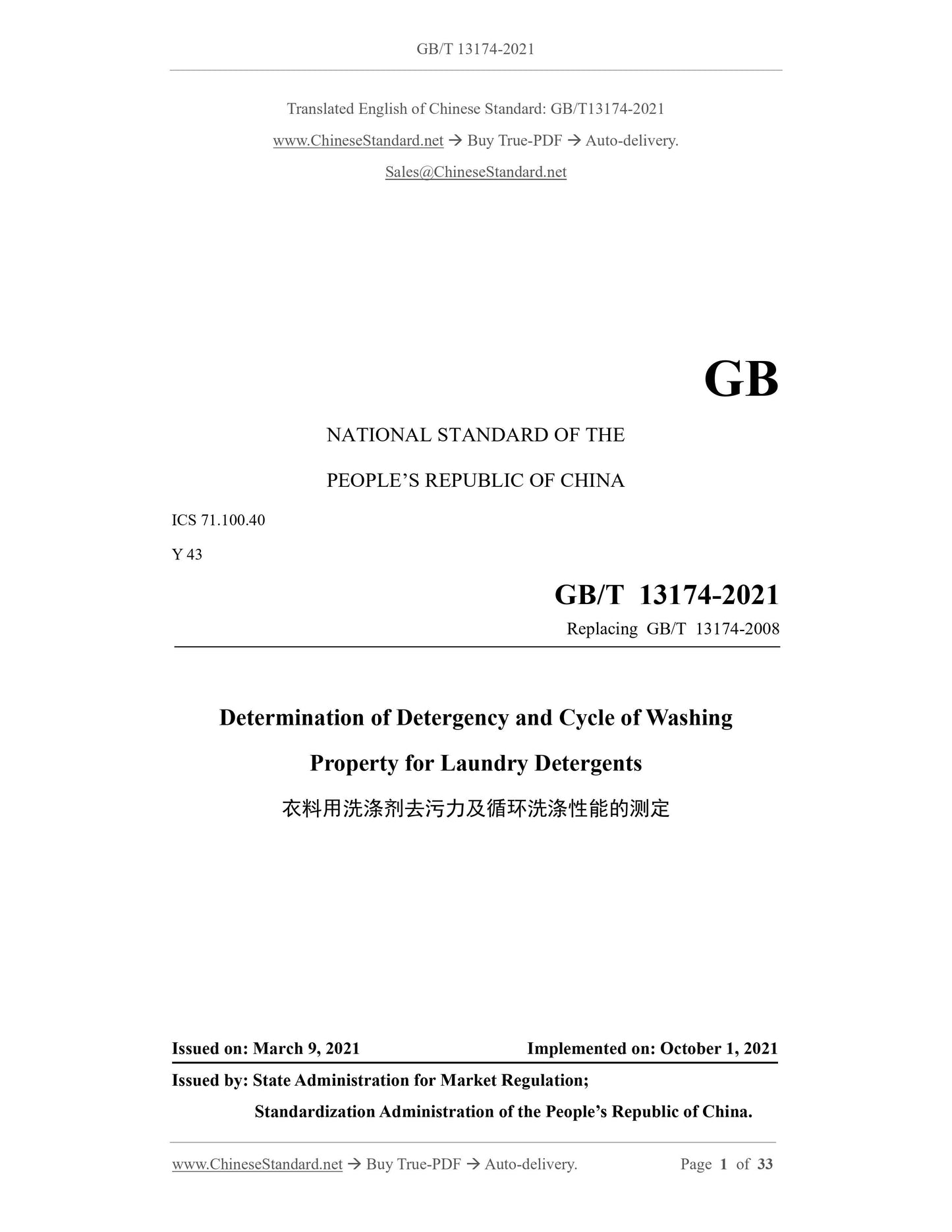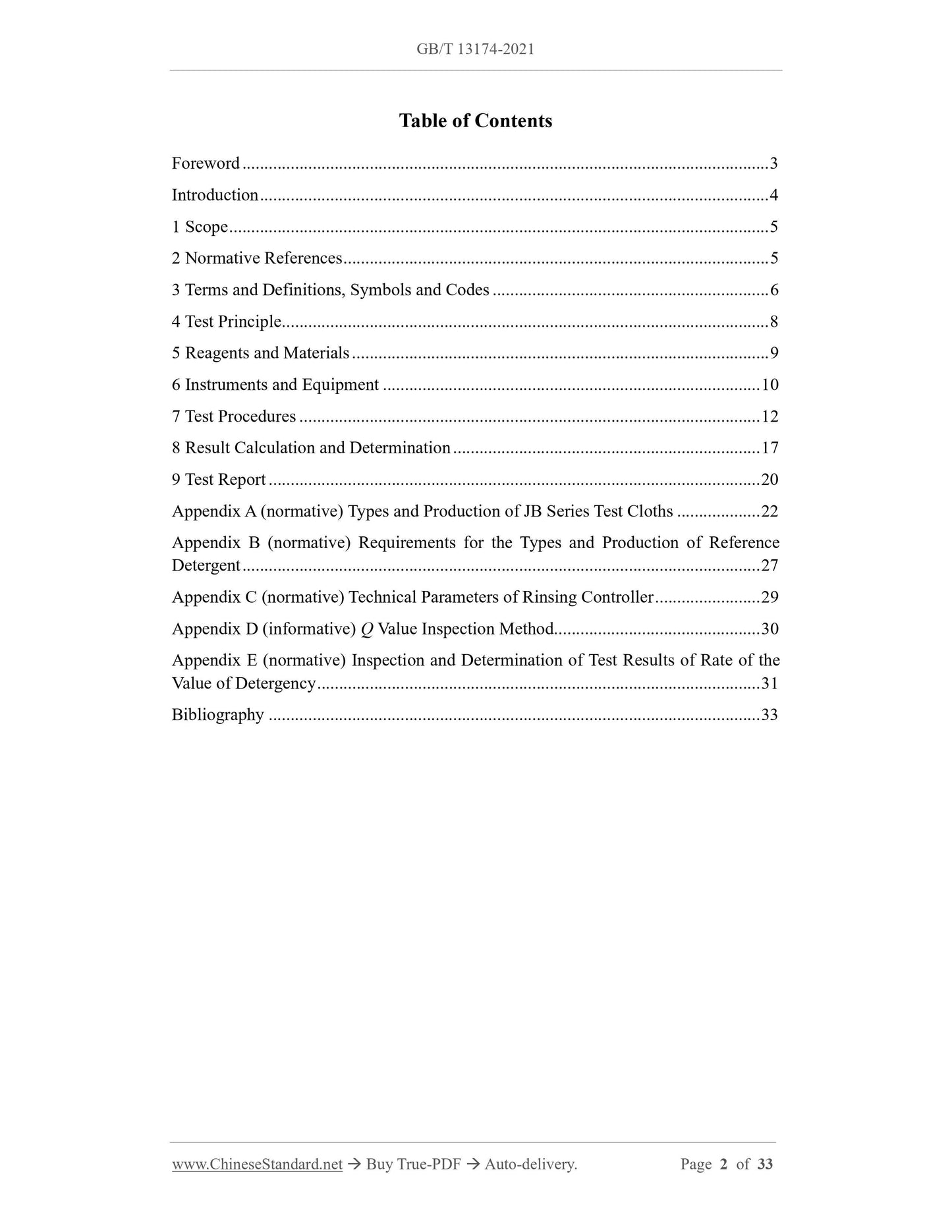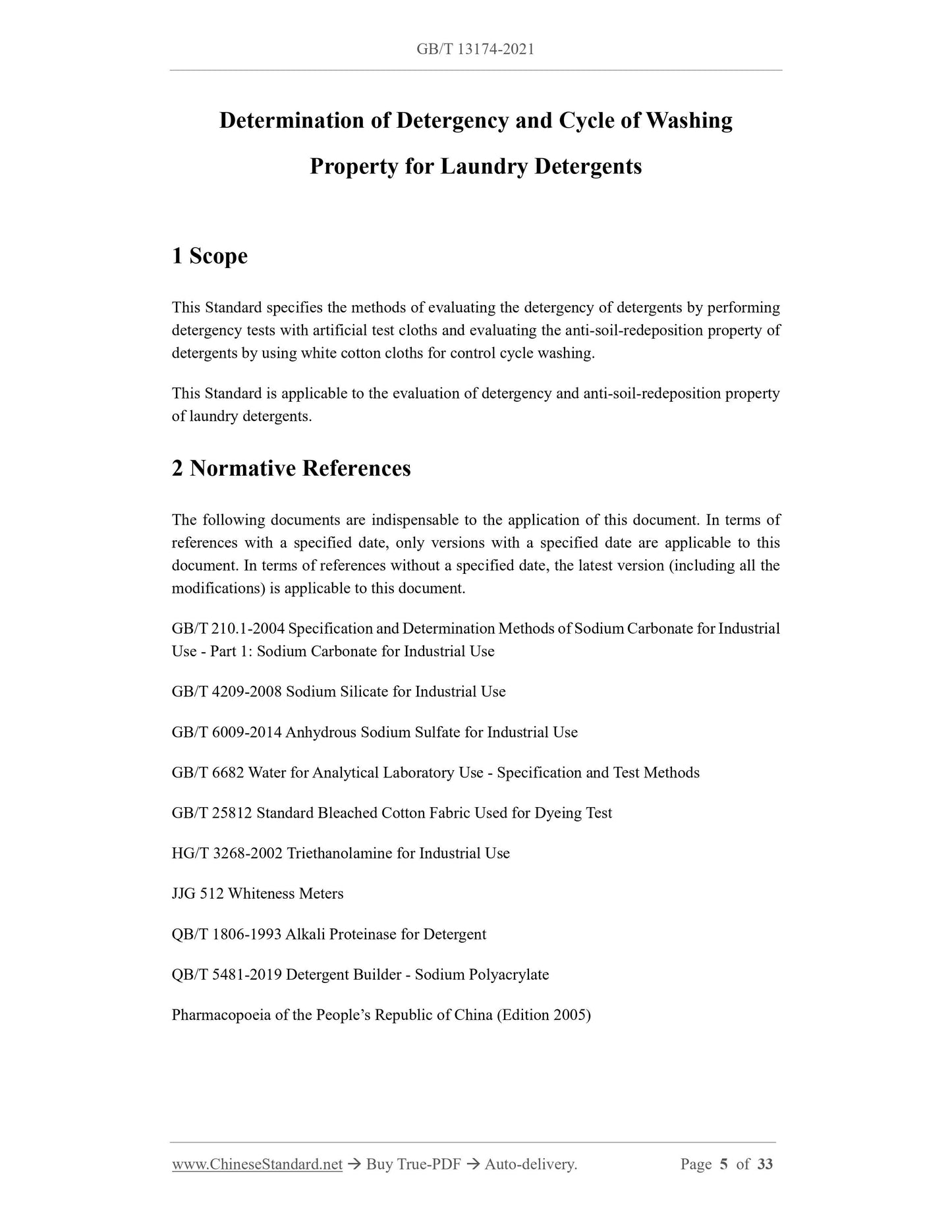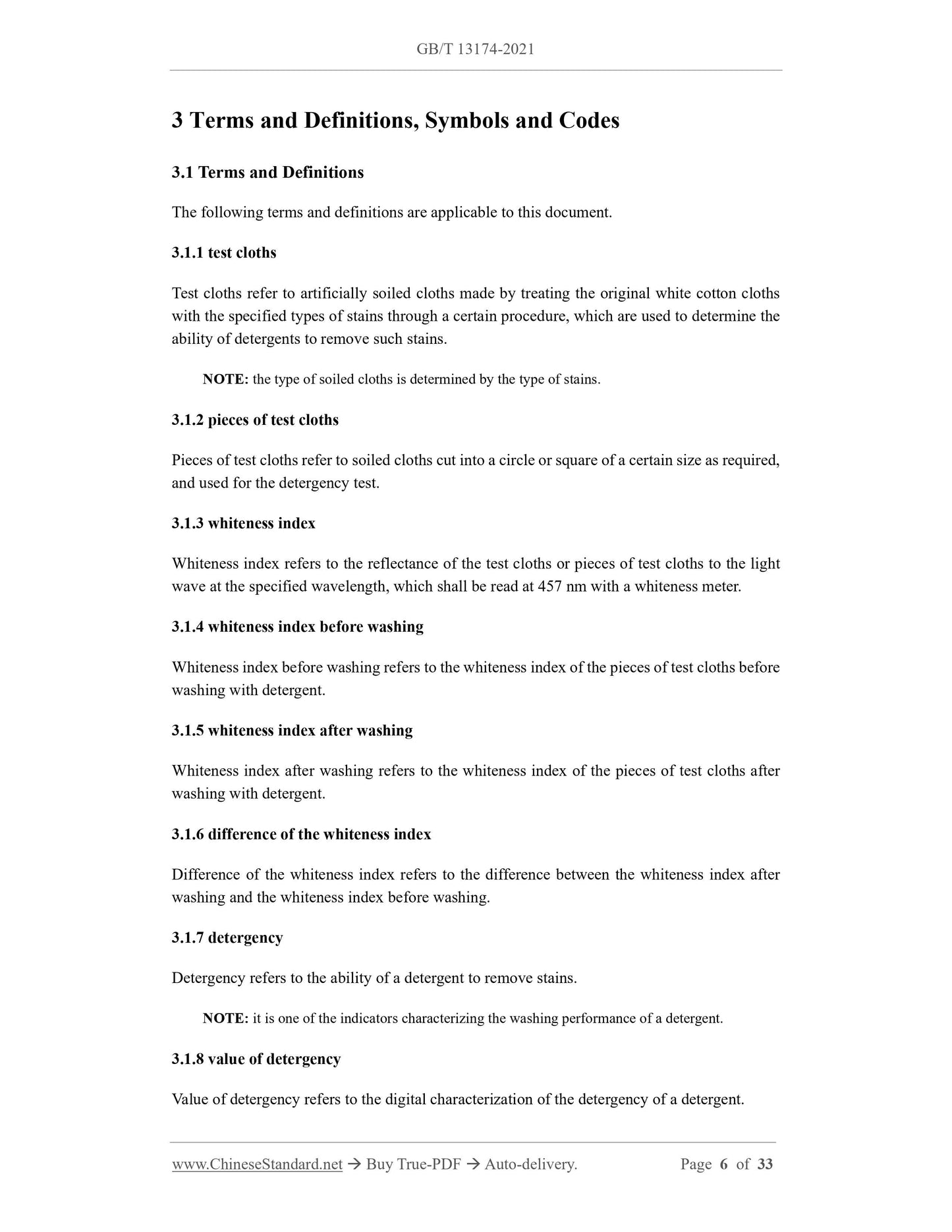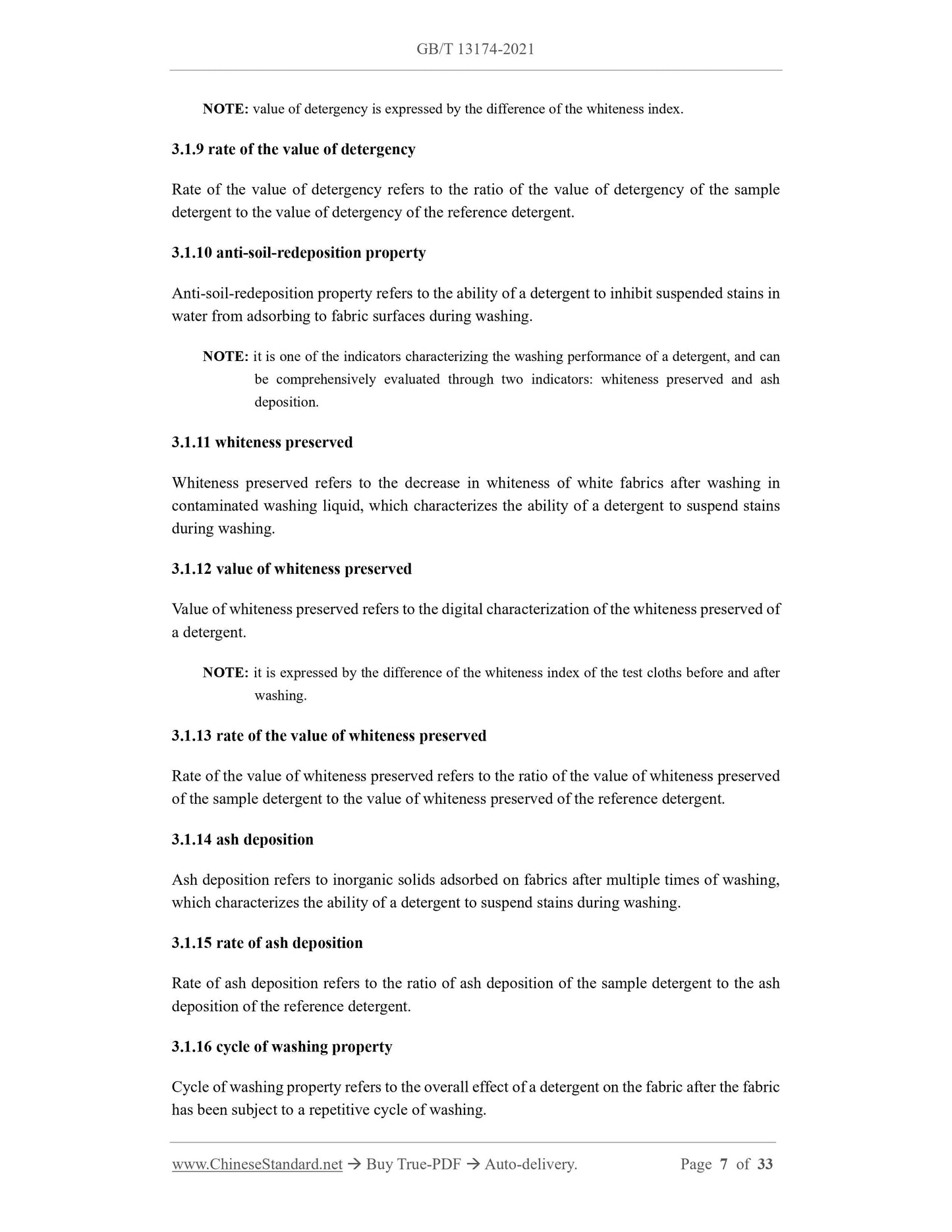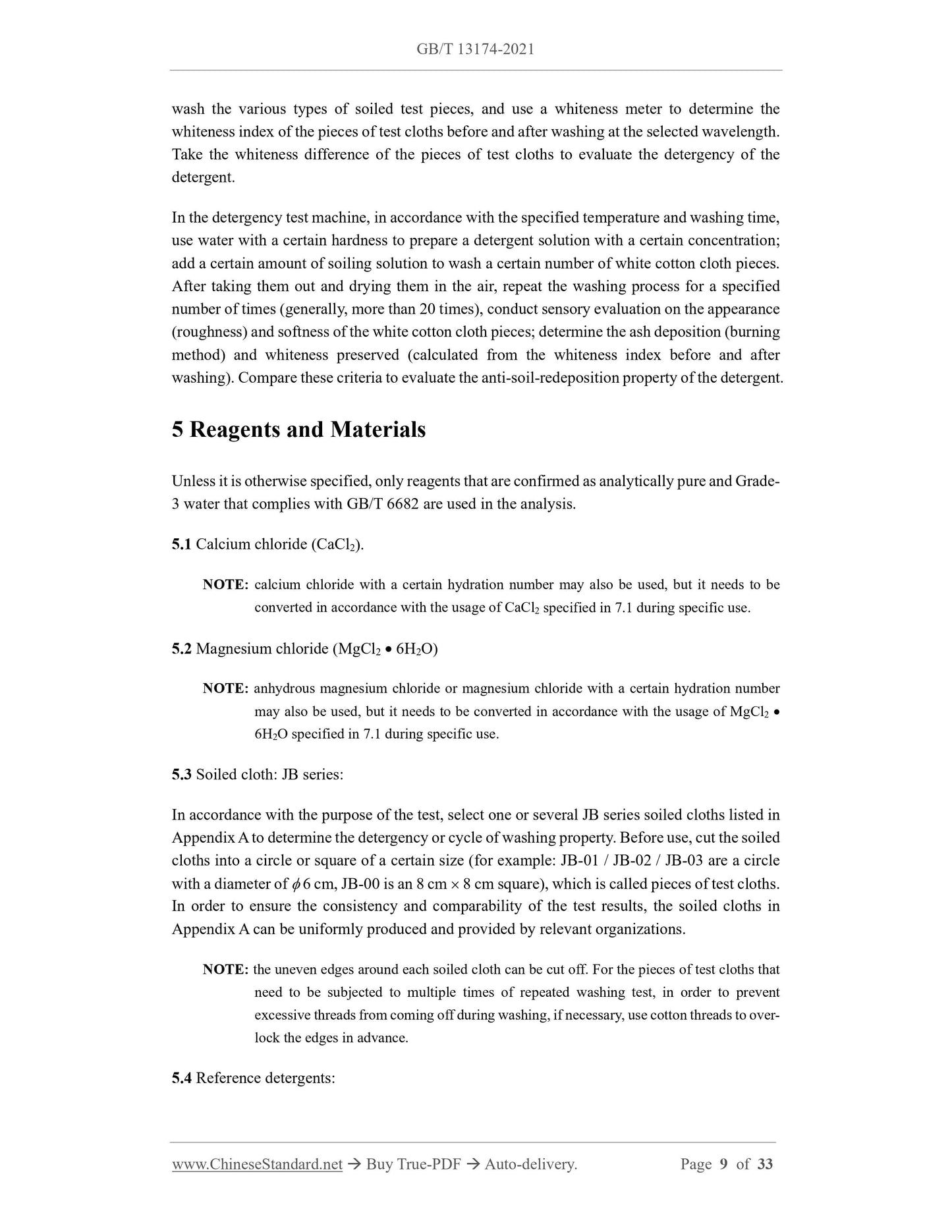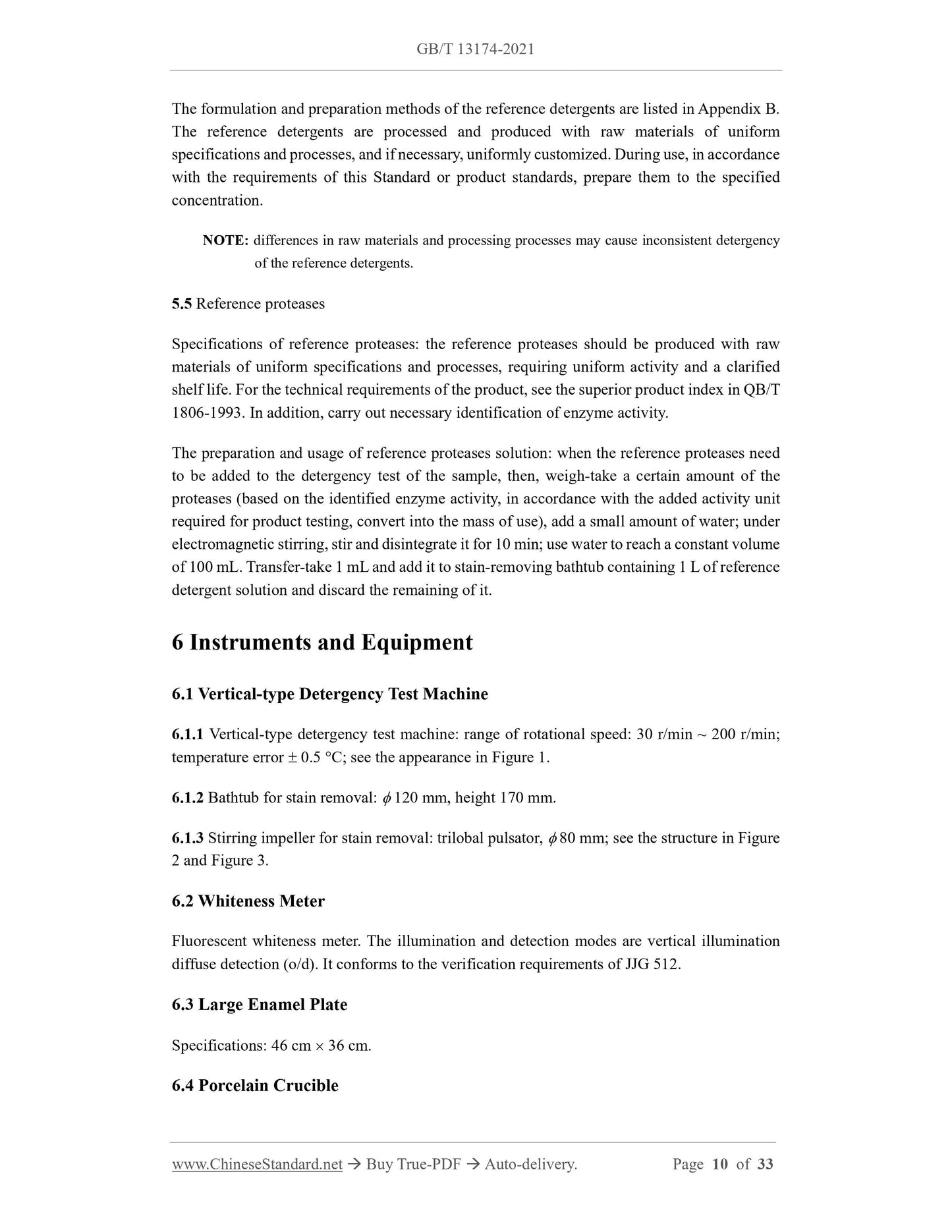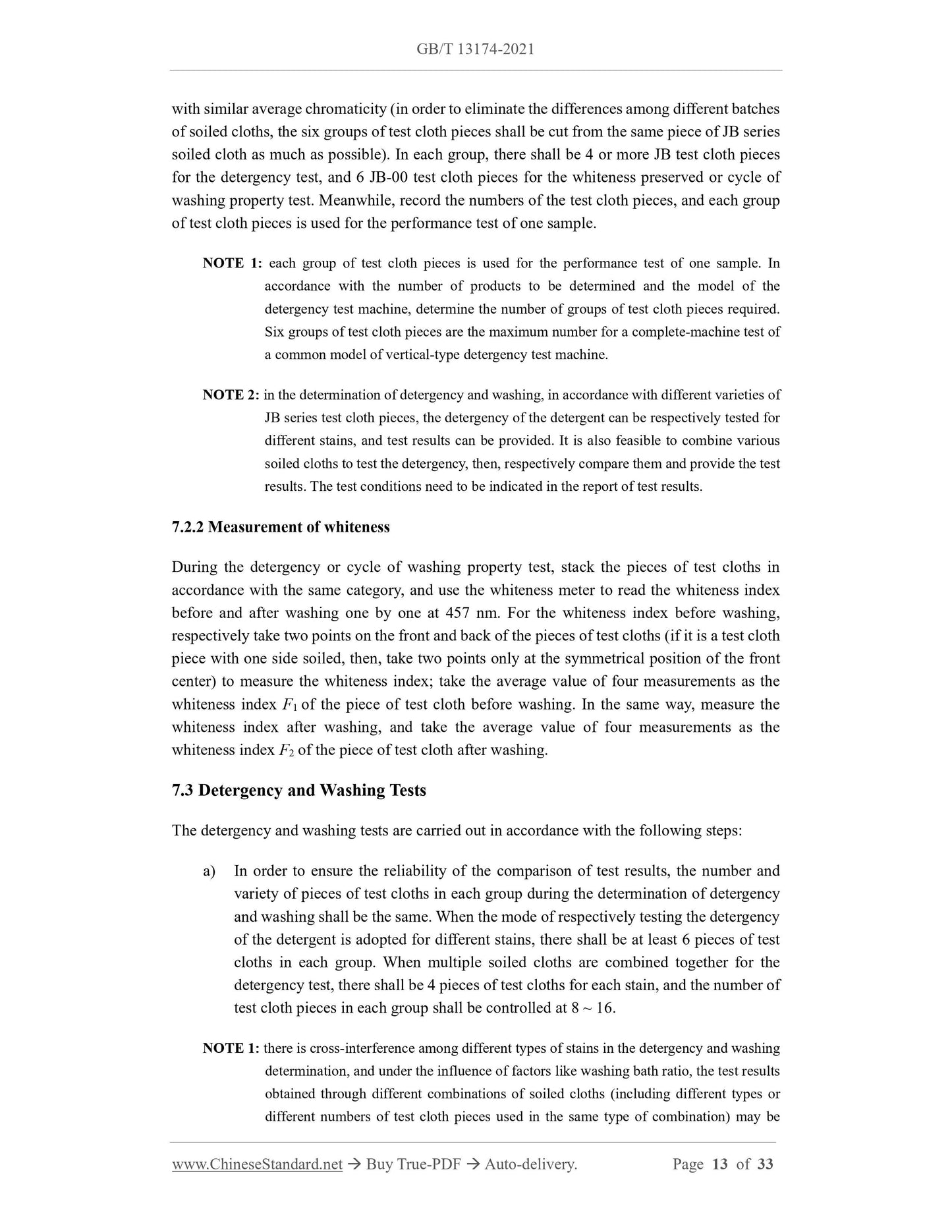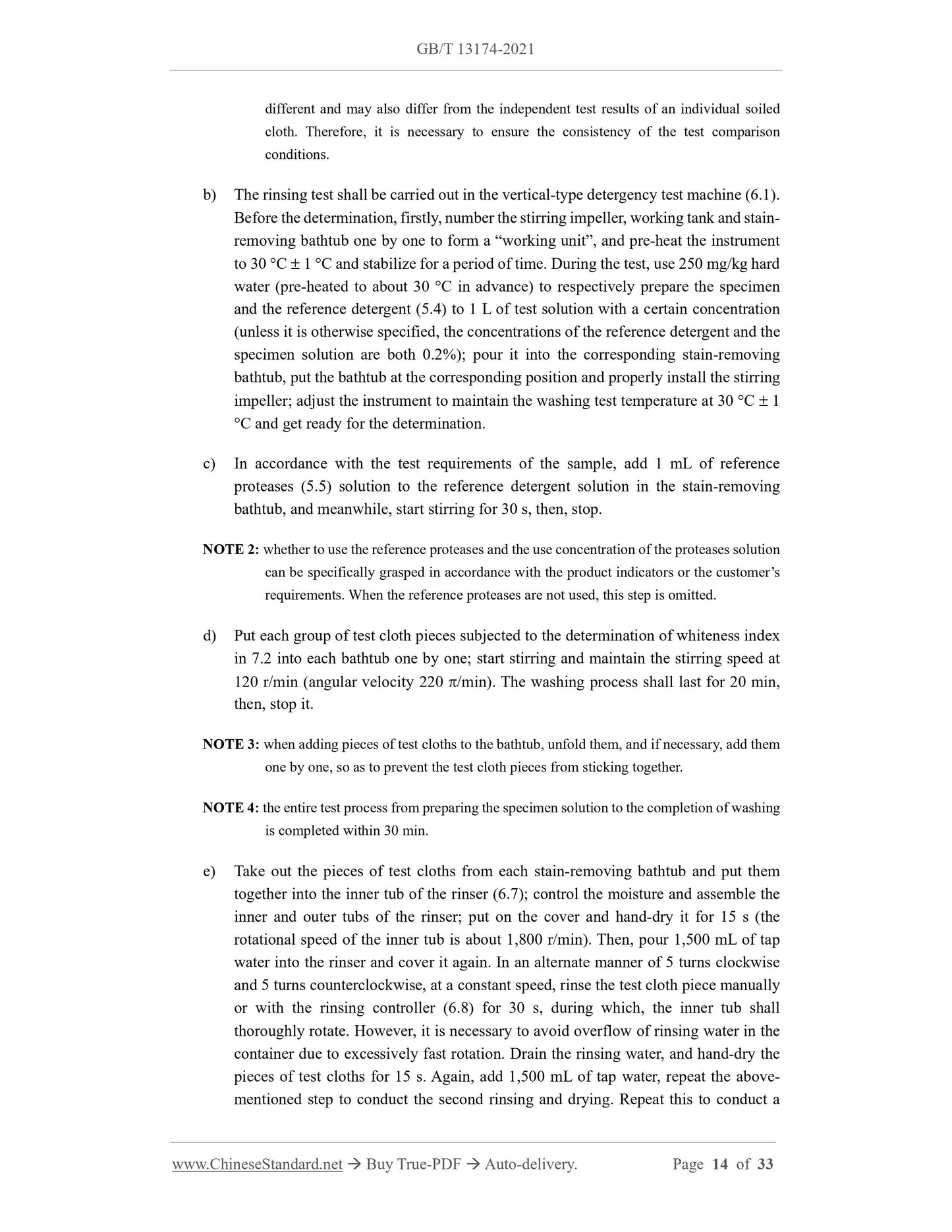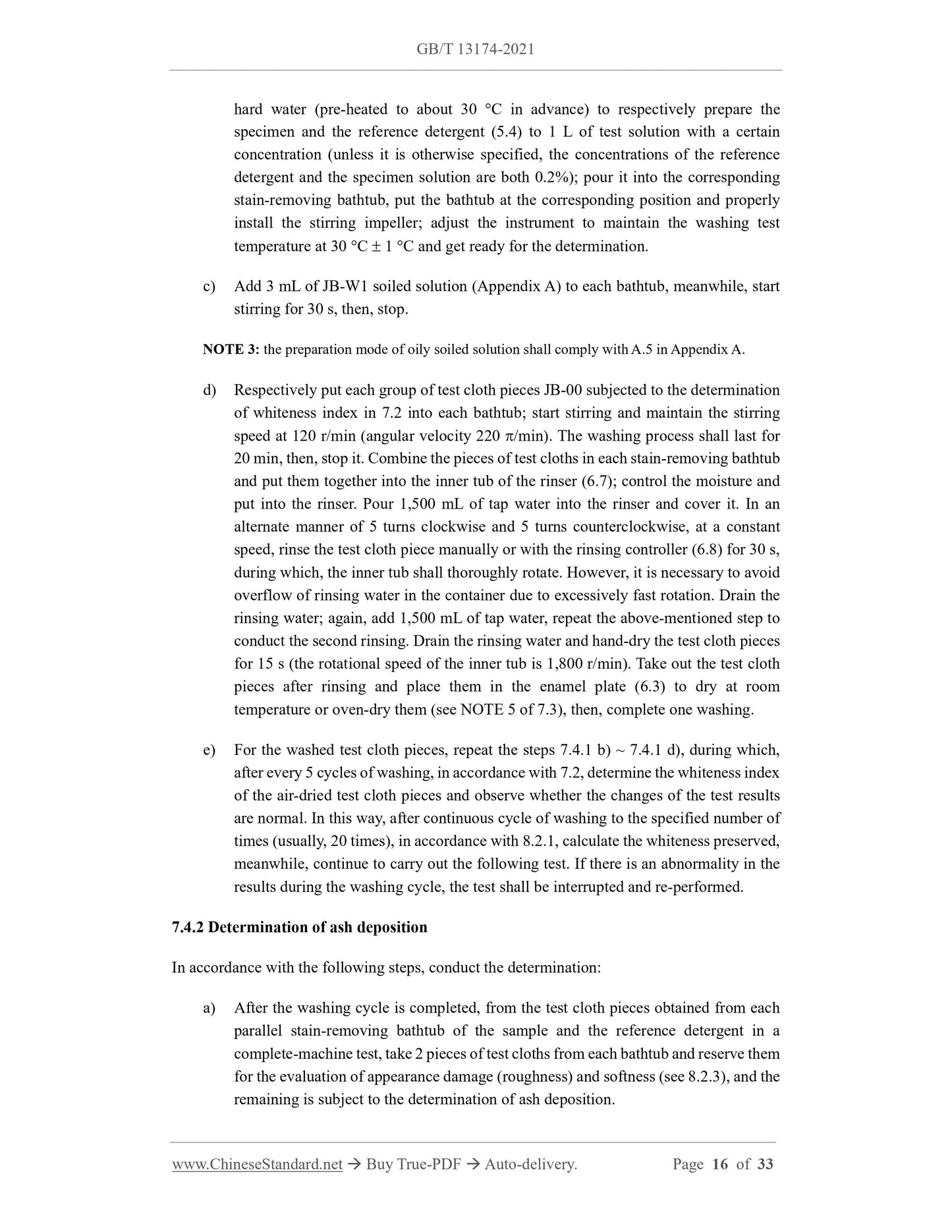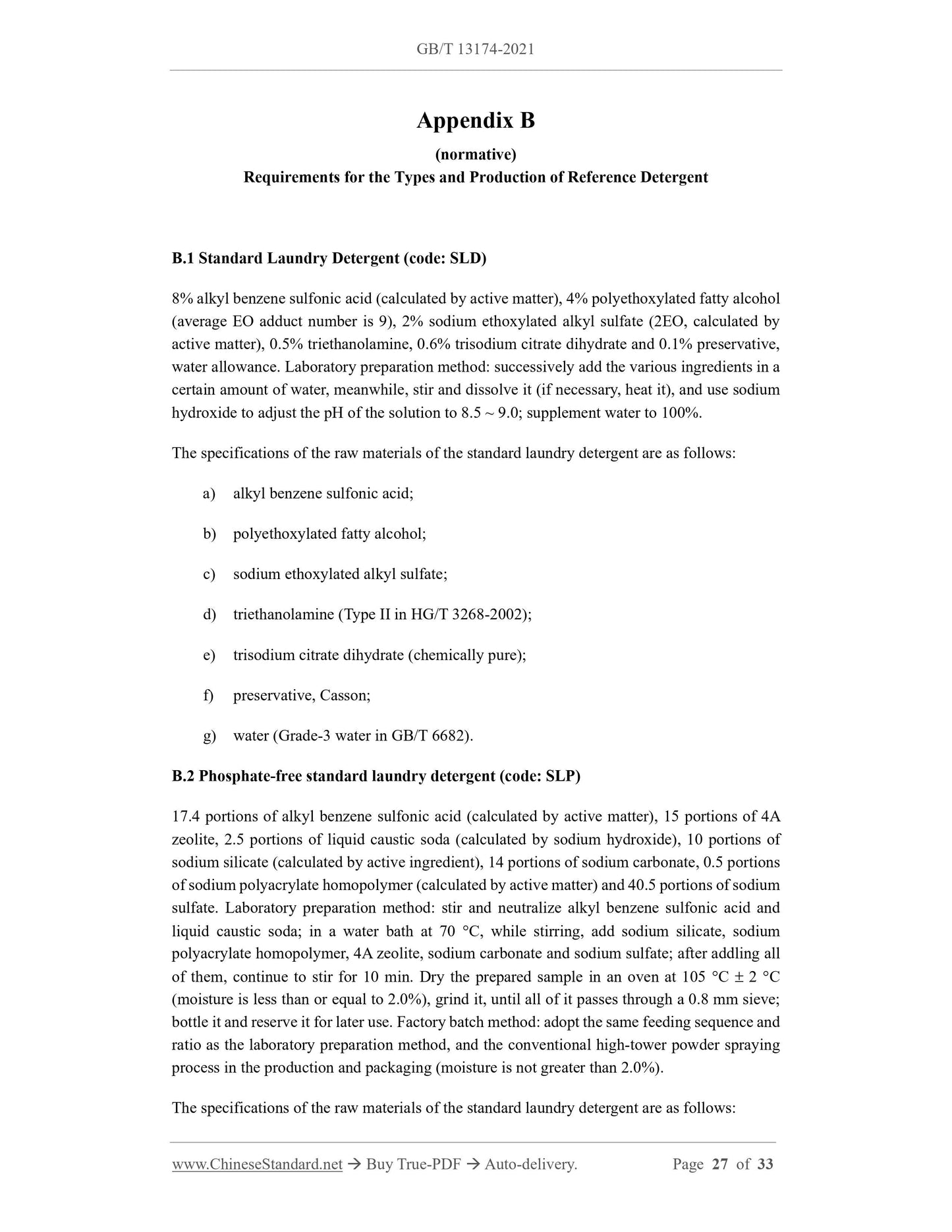1
/
of
12
www.ChineseStandard.us -- Field Test Asia Pte. Ltd.
GB/T 13174-2021 English PDF (GB/T13174-2021)
GB/T 13174-2021 English PDF (GB/T13174-2021)
Regular price
$305.00
Regular price
Sale price
$305.00
Unit price
/
per
Shipping calculated at checkout.
Couldn't load pickup availability
GB/T 13174-2021: Determination of detergency and cycle of washing property for laundry detergents
Delivery: 9 seconds. Download (and Email) true-PDF + Invoice.Get Quotation: Click GB/T 13174-2021 (Self-service in 1-minute)
Newer / historical versions: GB/T 13174-2021
Preview True-PDF
Scope
This Standard specifies the methods of evaluating the detergency of detergents by performingdetergency tests with artificial test cloths and evaluating the anti-soil-redeposition property of
detergents by using white cotton cloths for control cycle washing.
This Standard is applicable to the evaluation of detergency and anti-soil-redeposition property
of laundry detergents.
Basic Data
| Standard ID | GB/T 13174-2021 (GB/T13174-2021) |
| Description (Translated English) | Determination of detergency and cycle of washing property for laundry detergents |
| Sector / Industry | National Standard (Recommended) |
| Classification of Chinese Standard | Y43 |
| Word Count Estimation | 26,280 |
| Issuing agency(ies) | State Administration for Market Regulation, China National Standardization Administration |
Share
